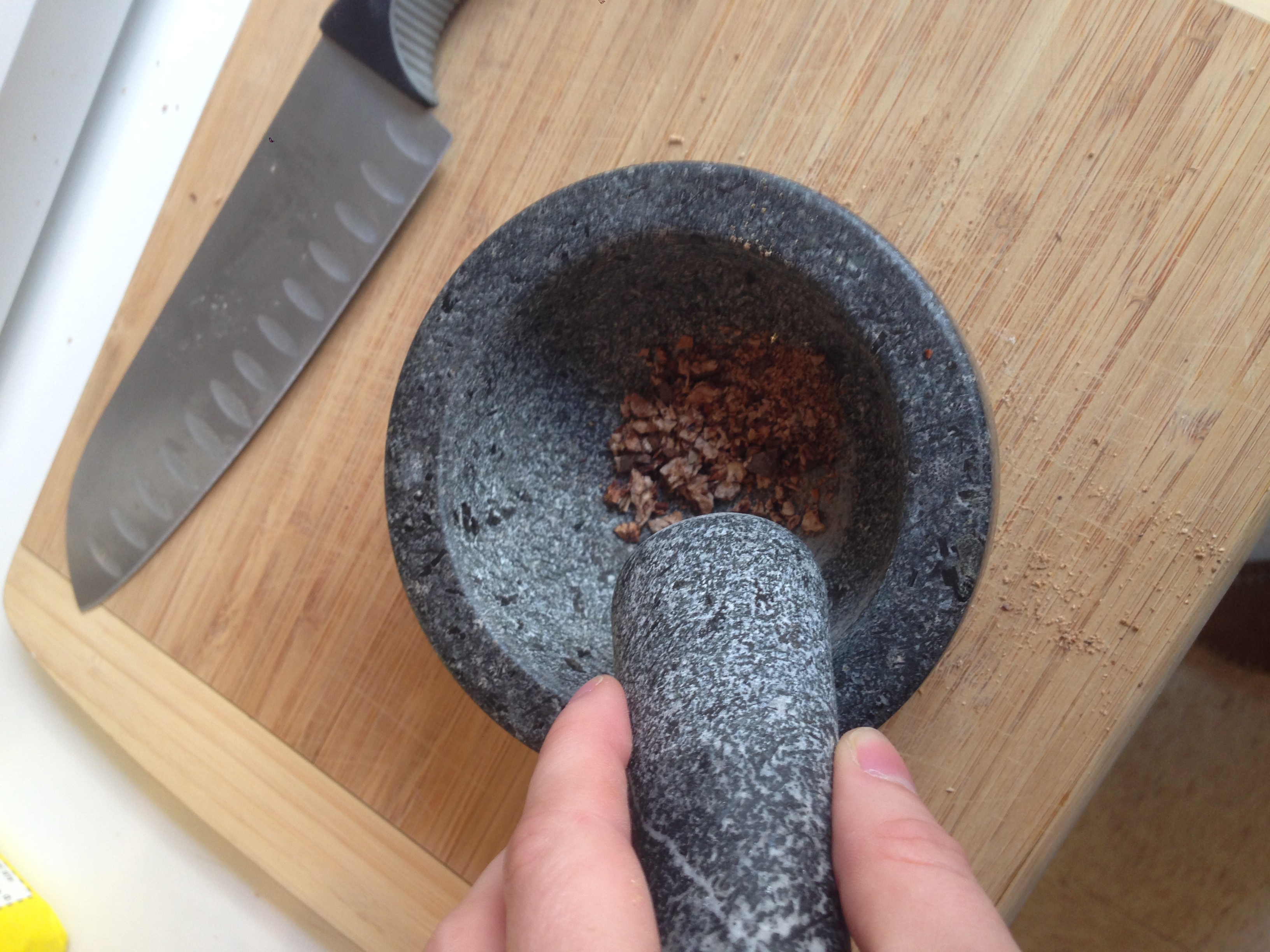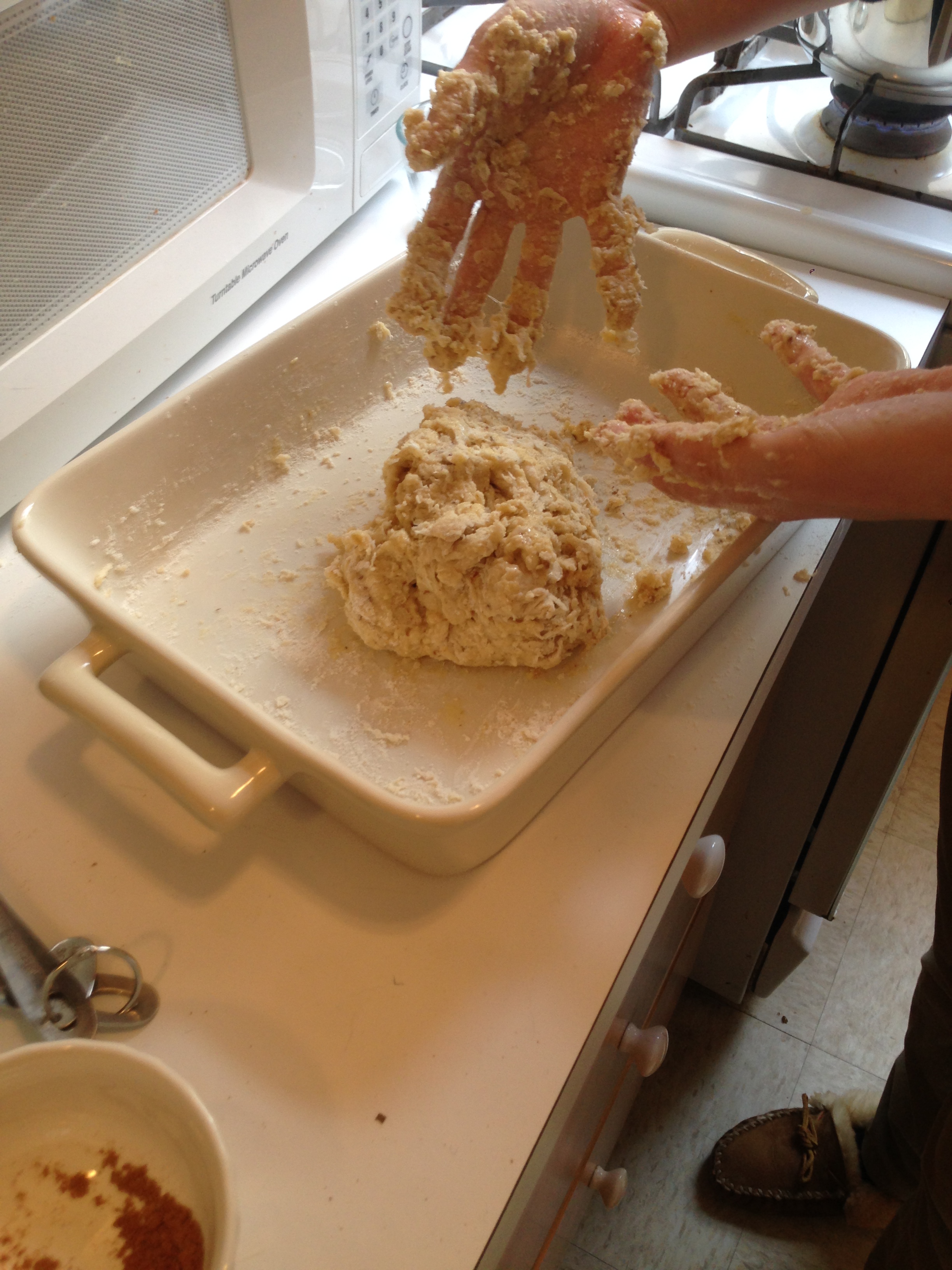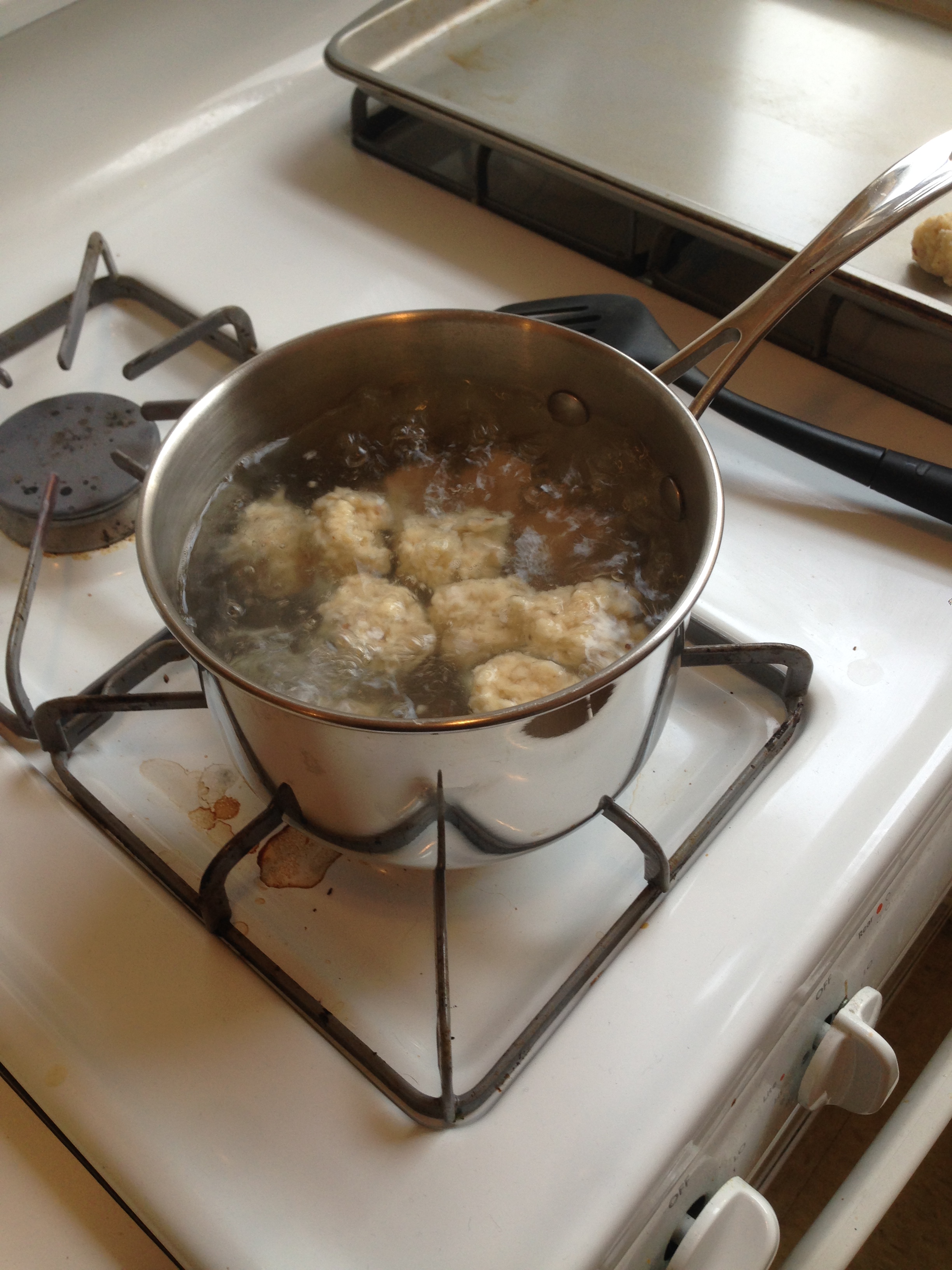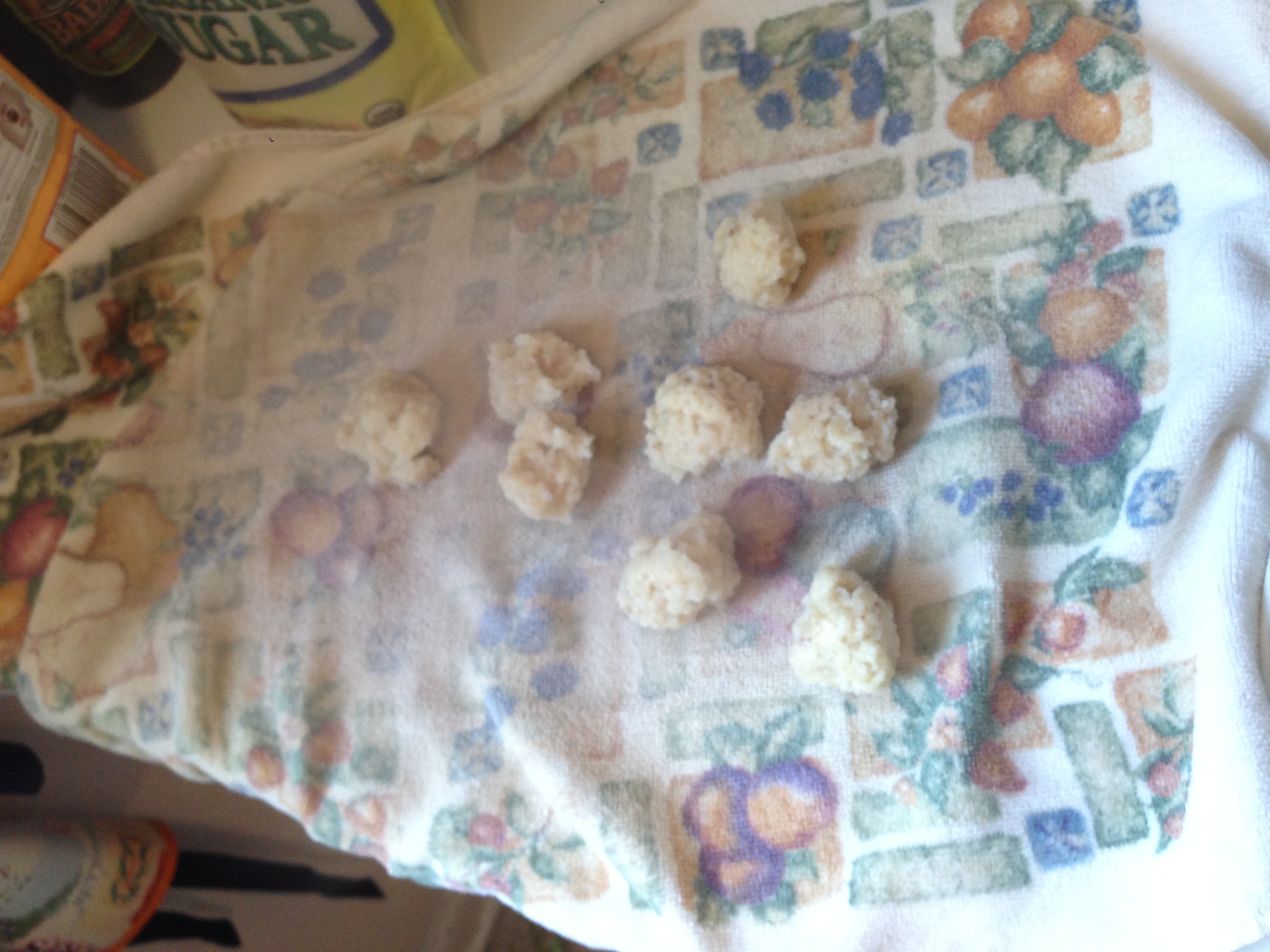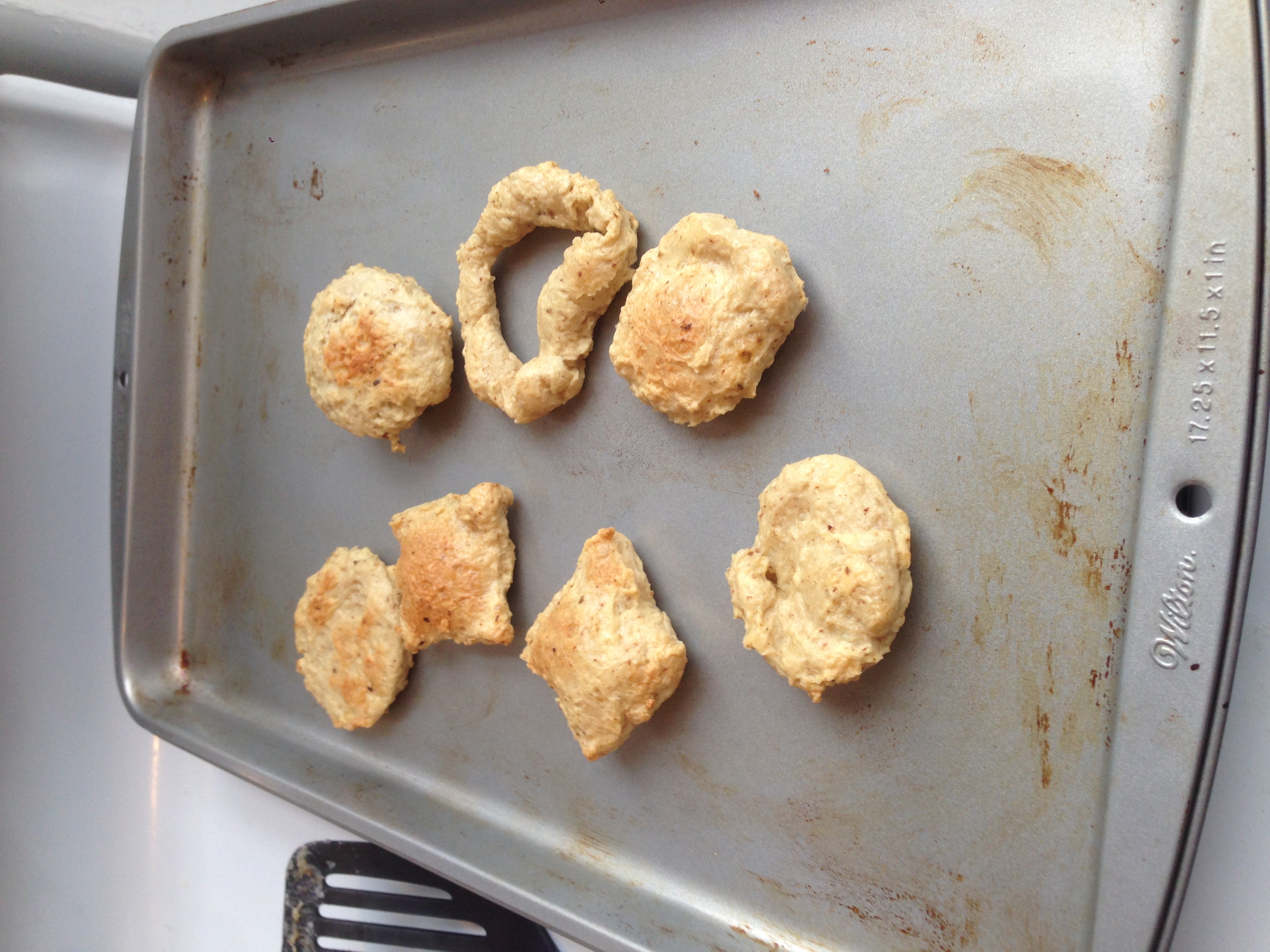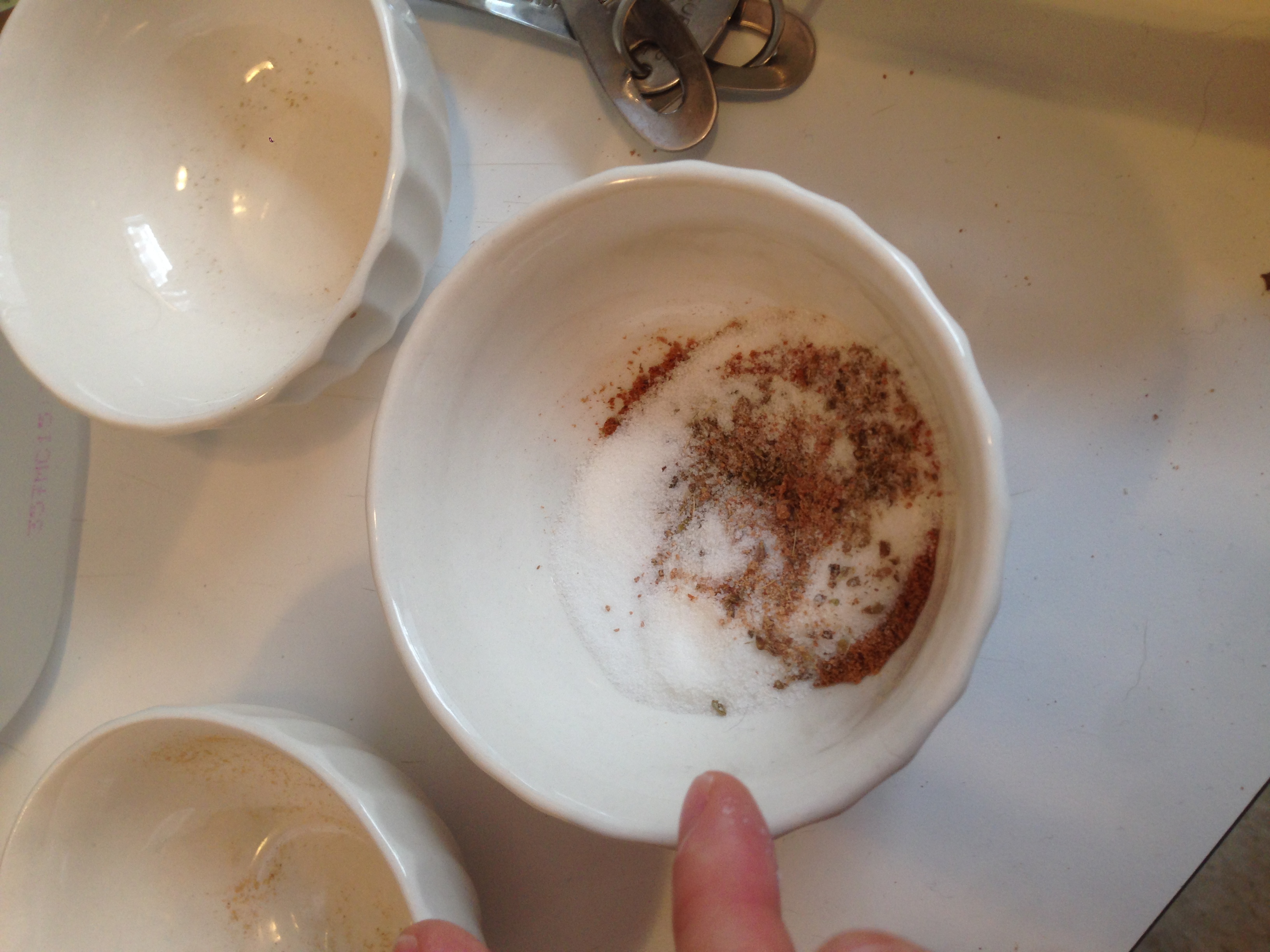Researching and determining our recipe
- Our recipe was 'To make fine cracknels' from a 1587 volume by Thomas Dawson. The full title of the book was The good husvvifes ievvell VVherein is to be found most excellent and rare deuises for conceits in cookerie, found out by the practise of Thomas Dawson. Whereunto is adioyned sundry approued reseits for many soueraine oyles, and the way to distill many precious waters, with diuers approued medicines for many diseases. Also certaine approued points of husbandry, very necessarie for all husbandmen to know. This made us think that the book was made for everyone - not just for women, or men, but for an entire family to use in perpetuity.
- The OED defined a cracknel as a "light, crisp kind of biscuit, of a curved or hollowed shape," first referenced in 1440 in a book called Promptorium Parvulorum.
- An eighteenth-century recipe for cracknels was found on Colonial Williamsburg's website. This is for a very different sort of biscuit, however, as it contains butter and much more sugar, and the only spice mentioned is carraway.
- There is also a reference to cracknels in the King James Bible.
- We transcribed our recipe as follows: "Take fine flower and a good quantitie of egges as many as wil supply the flowre, then take as much suger as will sweeten the past, and if you will not be at the [rast? rest?] to rayse it with egges, then put thereto sweet water Synamome and a good quantitie of nutmegges and mace, according to your [breae? bread?], take a good quantitie of Annisseede, and let all this be blended with your flower, and the putting in of your egges or other moysture, then set on your water and let it be at seething, before you put your Cracknelles in it they will goe to the bottome and at their rising take them out and drie them with a cloth then bake them."
- Several questions came up in reading this, which we researched in turn:
- What sort of flour?
- We searched various food sources provided in the assignment and Food Timeline to try to determine what sort of flour we could use. We eventually chose a brand of white flour which had been 'naturally' bleached by the sun; unfortunately it was still 'enriched' with substances including niacin, riboflavin, and folic acid.
- What sort of eggs?
- We decided to try to find eggs which were not the 'large' 'extra-large' or 'jumbo' sizes so often sold today. In the end we went for a brand which had been produced in Amish Country, supposedly free of all chemicals and/or large-farming techniques.
- What sort of sugar?
- We became convinced through our various class sources - especially the video we watched about making 'verjuis' - that we could get away with using the white, highly refined sugar that we are most familiar with today.
- Should the spices be whole, or ground?
- This question was easily answered once we started looking for our spices - there was no way we could put a whole nutmeg into these thin cookies! All of the spices were ground in the end.
- What is sweet water?
- The OED defines this as either 'fresh' water or as a type of perfumed concoction, the recipe to which we could not find. We decided to use bottled spring water, as NYC tap water is treated and fluorinated.
- Why poach the cracknels?
- This was confusing because poaching is usually reserved for baked items which are chewy, such as large pretzels or bagels. It seemed we would just have to forge ahead regardless.
- What quantities should be used of each ingredient?
- This was by far our biggest problem (and it applied to "bake them" as well - at what temperature, and for how long?). We eventually made our decisions based on previous baking experience - a base recipe for banana bread served as our model, and suggested that 1/3rd of a teaspoon of nutmeg was enough for a large amount of dough, and that ~350 degrees fahrenheit would be a safe temperature at which to start baking. We would check on the baking cracknels frequently to observe how they were cooking.
- Our initial recipe was therefore:
- 2 cups flour
- 1/4th cup of sugar
- 1/2 teaspoon ground cinnamon (later raised to 1 teaspoon)
- 1/4 teaspoon ground nutmeg (later raised to 1/2 teaspoon)
- 1/8 teaspoon anise seed (later raised to 1/4 teaspoon)
- 1/8 teaspoon mace (later raised to 1/4 teaspoon)
- 1/2 cup spring water
- 1 beaten egg
Making the dough
- We decided to grind our cinnamon sticks, whole nutmegs, and anise seeds with a mortar and pestle, both for the experience and to create fresher ingredients (our mace came pre-ground). This was hard work, but seemed worth it for the odors it created. Grinding 1 cinnamon stick created 2 tsps of cinnamon and 1 whole nutmeg created 1.5 tsp of nutmeg.
- While combining our dry ingredients in a ceramic dish*, we felt that we couldn't see enough of the spices in amongst the flour and sugar. Since these were supposed to be spicy cookies, we decided to double the amount of each spice. (Sidenote: mace is a really, really strong scent, and smells a bit like gunpowder! Perhaps we shouldn't have doubled it.)
- Celia slowly poured the 1/2 cup water while Caroline started to manipulate the dough. At this point it felt quite like the beginning of making any sort of bread dough.
- After adding the beaten egg, the mixture immediately became extremely sticky, and turned quite yellow from its previous white-ish color. Nevertheless, we were able to mold it into a coherent ball.
*procedural notes: we chose a ceramic lasagna bowl over a bamboo mixing dish, as we thought this would be closer to the material available at the time. We also washed the implements between each grounding, which may or may not have been done in a kitchen in the 1500s.
Poaching
- We tested the poaching process with just one small piece of dough to start with. It sank to the bottom, as the recipe described, and stuck there. After we prodded it free with a wooden spoon, it took about 3 minutes 30 seconds for it to start floating freely at the surface.
- When we put in a whole batch of round cracknels, however, it only took about 2 minutes for them all to start floating. This made us think that the first piece of dough might have been buffeted around too much by the boiling bubbles and currents for its movement to be entirely natural.
- Once they started floating, the cracknels were removed from the boiling spring water and placed on a washcloth to briefly dry off.
Batch #1
- Based on both previous experience and on how sticky the dough was, we decided our first batch of cracknels would be rolled into small balls. Once they had been poached (~2 minutes) and patted dry on the cloth, they were baked on a cookie sheet in an oven which had been pre-heated to ~350 degrees fahrenheit.
- We checked the cracknels every five minutes and found that:
- at 5 mins: they felt light and crispy, same at 10 mins
- 15 mins: tough on the outside, 17 mins were crispy on the outside
- 20 mins: we cut one open, they were doughy inside
- 30 mins: much harder exterior, with a bready interior
- We took the cracknels out of the oven after 30 minutes of baking. They were crisp and hard on the outside, but still rather chewy on the inside - in fact, the consistency of the dough on the interior was quite like a chewy bagel.
Batch #2
- For this batch, we decided to try some other, flatter shapes, based more on the shapes described in the Colonial Williamsburg recipe. We formed rough squares and circles, each about 1/4 of an inch thick. These poached in 2.5 minutes. We also tried to make a hollow ring, but this was very difficult to punch and lift out of the super-sticky dough.
- Also by this time, the spring water in our saucepan was beginning to boil and evaporate down to quite a low level. We refilled it and let the water come back to a high boil before continuing.
- To our surprise, these flatter cracknels also needed to be baked for about 30 minutes to reach the same consistency as the first batch, despite their being much thinner. However, at 5 minutes of baking, they were still very gelatinous.
- When we tried eating these cracknels, we were excited to find that they had bubbled up in their middles and were slightly hollow inside - just like the OED hinted they should be! This confirmed our feeling that if our dough had been slightly drier - dry enough to roll out and cut properly, like the Colonial Williamsburg recipe - we would have ended up with very thin, crunchy, pretzel-like biscuits.
Batch #3
- For this final batch, we decided to use our remaining dough to make a few more round cracknels, treated slightly differently. We had wondered what, if anything, cracknels might be served with, and how - the 18th-century Williamsburg cracknels were apparently 'very good with chocolate' - and so, again based on previous baking experience, we decided to coat these round cracknels with a mixture of our remaining spices and sugar.
- Three cracknels were coated with this mixture before being poached; much of the spice floated away from the cracknels, but they did seem darker and spicier than the first batch overall. Two further balls were coated after being poached, right before being baked; these were completely coated in spice-sugar mix and quite a mouthful!
Photos
